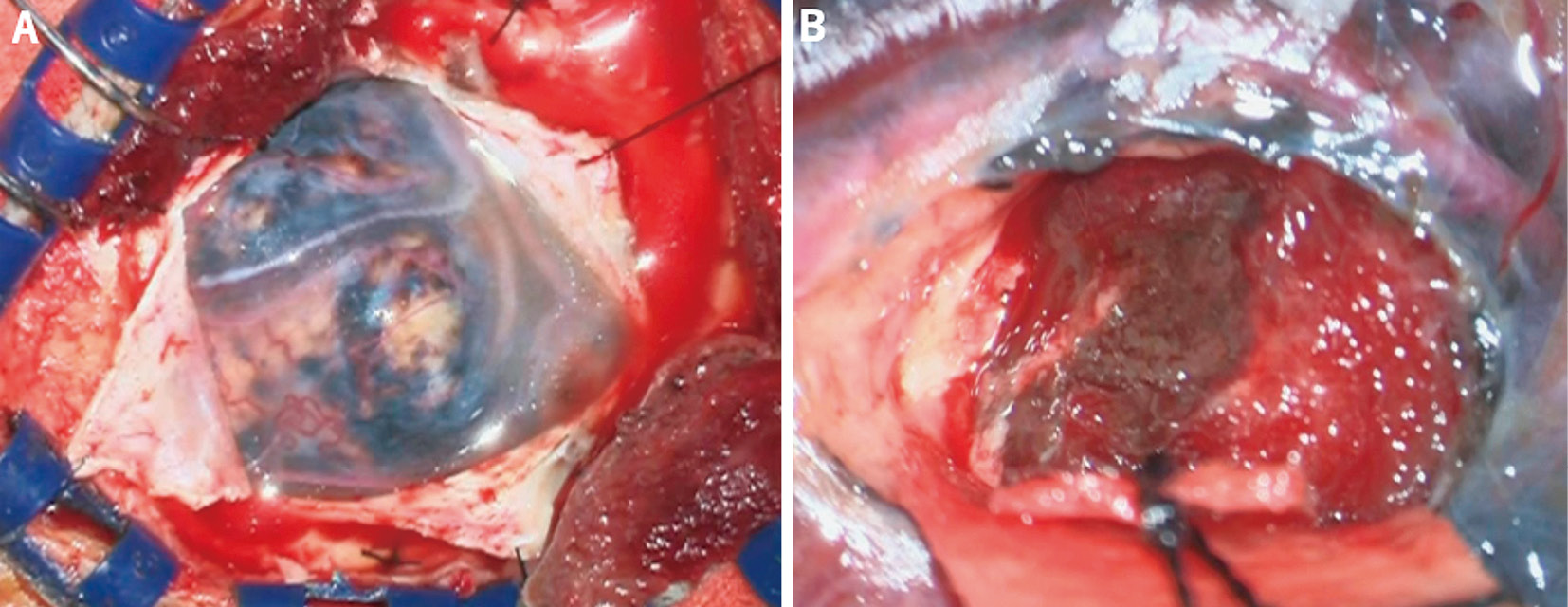- 著者
- Kenta NAKASE Ryosuke MATSUDA Tomoya OKAMOTO Ichiro NAKAGAWA Maiko TAKEDA Katsumi SAKATA Hiroyuki NAKASE
- 出版者
- The Japan Neurosurgical Society
- 雑誌
- NMC Case Report Journal (ISSN:21884226)
- 巻号頁・発行日
- vol.10, pp.315-320, 2023-12-31 (Released:2023-11-11)
- 参考文献数
- 30
Meningeal melanocytomas of the central nervous system, although typically benign, rarely undergo malignant transformations. A 46-year-old man presented with headache and nausea 4 years after gross total resection of a craniovertebral junction meningeal melanocytoma at another hospital. The initial clinical course was previously reported.1) Computed tomography revealed the presence of multiple intracranial mass lesions. Furthermore, magnetic resonance imaging showed multiple intracranial lesions and meningeal dissemination. A biopsy was performed for a circumflex lesion located in the right frontal lobe. Pathological examination showed anaplastic changes and a Ki-67 index of 33%. Based on the pleomorphic changes and high mitotic activity, the patient was diagnosed with primary cerebral malignant melanoma. The patient received four cycles of nivolumab (80 mg) and ipilimumab (165 mg), followed by whole-brain radiotherapy (37.5 Gy). However, the disease progressed after the third cycle. Genome analysis revealed GNAQ Q209P and SF3B1 R625C mutations, but no treatments related to these gene mutations were available. Despite the seven cycles of nivolumab therapy, the patient eventually passed away 9 months after surgery. This case was a rare example of malignant transformation and leptomeningeal melanomatosis in a meningeal melanocytoma. It highlights the importance of careful follow up after gross total resection. Identification of molecular alterations can lead to better detection of melanocytic melanomas with poor prognosis and high risk of recurrence and metastasis. It can also facilitate the development of novel therapeutic options for these patients.
